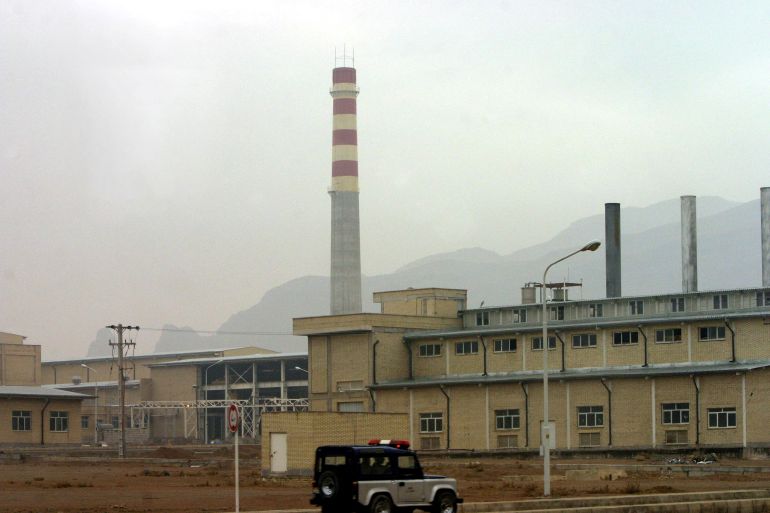Iran to accelerate underground uranium enrichment: IAEA
UN nuclear watchdog says Iran plans to install hundreds more advanced uranium-enriching centrifuges at Natanz plant.

Iran plans to install hundreds more advanced uranium-enriching centrifuges at an underground plant in breach of its deal with global powers, according to a United Nations nuclear watchdog report, a move that will raise pressure on US President-elect Joe Biden.
The confidential International Atomic Energy Agency (IAEA) report obtained by the Reuters news agency on Friday said Iran plans to install three more cascades, or clusters, of advanced IR-2m centrifuges in the underground plant at Natanz, which was apparently built to withstand aerial bombardment.
Keep reading
list of 3 itemsIran accuses West of backing Israel on scientist assassination
Biden: Iran nuclear deal best way to avoid Middle East arms race
Iran’s nuclear deal with Western powers says Tehran can only use first-generation IR-1 centrifuges, which are less efficient, at the underground plant and that those are the only machines with which Iran may accumulate enriched uranium.
Iran recently moved one cascade of 174 IR-2m machines underground at Natanz and is enriching with it.
It already planned to install two more cascades of other advanced models there, in addition to the 5,060 IR-1 machines that have been enriching for years in the plant built for more than 50,000.
“In a letter dated 2 December 2020, Iran informed the Agency that the operator of the Fuel Enrichment Plant (FEP) at Natanz ‘intends to start installation of three cascades of IR-2m centrifuge machines’ at FEP,” the IAEA’s report to its member states said.
Iran has breached many of the deal’s core restrictions on its nuclear activities in response to US President Donald Trump’s withdrawal from the agreement and his reimposition of crippling economic sanctions.
Tehran says its breaches can quickly be reversed if Washington’s moves are undone.
Biden, who takes office on January 20, said he will bring the US back into the deal if Iran resumes full compliance with its nuclear restrictions. That raises the prospect of a standoff over who should move first.
On Wednesday, Iran’s 12-member vetting body Guardian Council passed a bill aimed at further reducing Iran’s nuclear commitments that was proposed by conservatives and hardliners in the country’s parliament but opposed by the government.
President Hassan Rouhani said the bill would be “harmful” to diplomatic efforts aimed at restoring the embattled 2015 nuclear deal signed between Iran and world powers.
But members of Parliament – furious with the assassination of top nuclear and military scientist Mohsen Fakhrizadeh last Friday and what they perceive as Iran’s lack of adequate response – pressed ahead.
Faster enrichment
Iran transferred the already-operating cascade of IR-2ms underground from an above-ground plant at Natanz where only a handful of those machines remain, the IAEA has said.
The extra cascades would therefore have to involve some of the hundreds of IR-2m machines removed and put into storage under the 2015 deal.
While the first cascade did not increase Iran’s production of enriched uranium because it was already enriching above ground, the extra cascades would.
The IAEA’s quarterly report on Iran last month showed Tehran had stockpiled 12 times the 202.8kg of enriched uranium it is allowed to have under the deal, more than 2.4 tonnes.
That is still a fraction of the more than eight tonnes it had before the landmark 2015 deal, and it has not enriched uranium to a purity of more than 4.5 percent since then.
It achieved 20 percent before 2015, closer to the 90 percent of weapons-grade uranium.
US intelligence agencies and the IAEA believe Iran had a coordinated, clandestine nuclear weapons programme that it halted in 2003, the year its secret construction of Natanz was revealed by an opposition group in exile.
The deal is aimed at keeping Iran at arm’s length from being able to produce a nuclear bomb. It says it has never tried to.